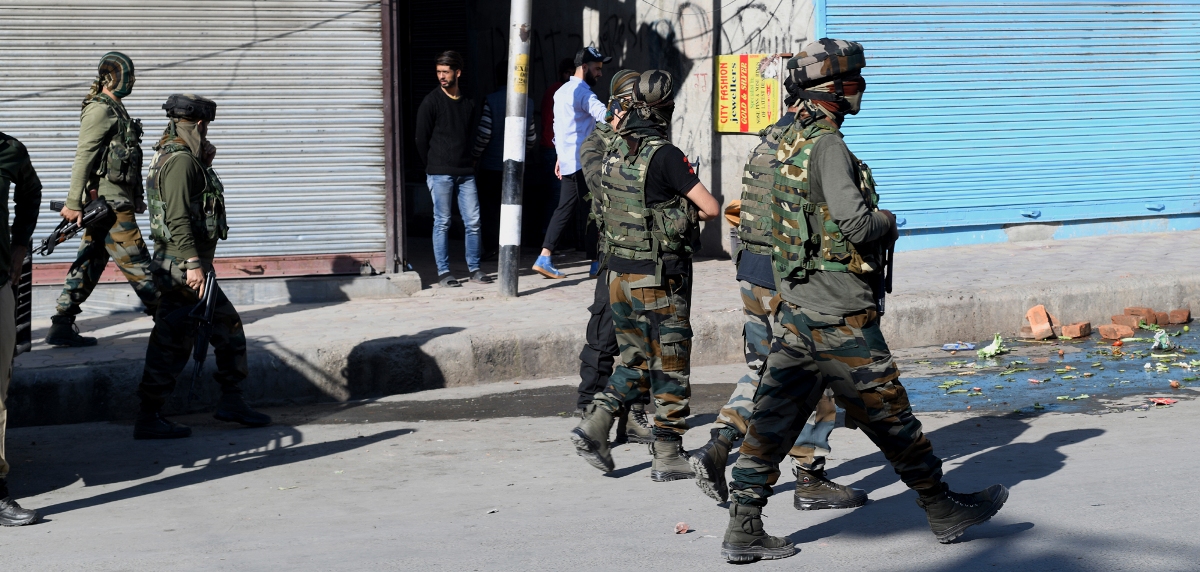KL Report
Srinagar
At a two day national Seminar on “Retrospective and Prospective of 2014 Kashmir Floods for Building Flood Resilient Kashmir” held at Srinagar last year, sponsors Department of Earth Sciences (Kashmir University) and Centre for Dialogue and Reconciliation (CDR) have released the final set of recommendations.
September 2014 flood was triggered by the complex interplay of atmospheric disturbances that brought widespread and extreme rains all across the state. The Jhelum waters, that used to be the provider of life and sustenance, suddenly became a monstrously destructive force against the human life and the infrastructure that cohabit its backyards since millennia. In general, the layout of Kashmir valley is such that it is highly prone to flooding. The hydrographic features and the drainage characteristics of the Jhelum river system establish that the frequency of floods has been very high ever since the valley assumed its present form.
Considering the fact that absolute protection from extreme flooding is not possible, a scale of intervention priorities is needed to reduce the risk of the people to floods, based on the comprehensive understanding of the causes and consequences of the extreme flooding. Any future flood strategies for Jhelum basin shall benefit from our learning from this horrendous experience and the threadbare deliberations held at the 2-day National Seminar.
The experts from various central agencies (Central Water Commission, National Institute of Hydrology, National Geophysical Research Institute, Central Groundwater Board, National Disaster Management Authority, IMD, NRSC/ISRO and National Green Tribunal) and state government agencies (Irrigation and Flood Control, Public Health Engineering, Rural Development, LAWDA, Srinagar Development Authority, IMPA, Agriculture) academia (Kashmir University, Indian Institute of Technology-Roorkee, National Institute of Technology-Srinagar and Jammu University), and various segments of the civil society, including experienced professionals, attended the Seminar.
The main issues related to flooding phenomena were highlighted at different technical sessions of the Seminar and the participants of the Seminar came out with the recommendations outlined below:
Key Issues that were discussed:
Climate change concerns about increasing frequency of extremes in the state
The probability of the flooding within next few years due to high Ground Water levels in the basin.
Absence of Urgent need for setting up of a Disaster Management Authority in the state which could have institutionalized the disaster management planning and operation in the state
Lack of Integrated Flood Management Planning, inadequate flood control infrastructure and lack of information on flood vulnerability assessment at desired spatial scales
Inadequate technical capacity of the state government in undertaking flood forecasting, vulnerability assessments, flood DSS and scenario mapping.
Scanty network of hydro-meteorological observation stations in the mountainous J&K State and lack of high resolution quality spatial data
Fragmented knowledge on hydro-meteorological processes
Absence of any flood early warning system (FEWS)
Government unpreparedness in tackling the enormity of the 2014 flood disaster
Communication failure at the critical time when it is needed the most.
Siltation of water channels in the Jhelum basin due to deforestation, road cutting etc.
Loss of wetlands in the floodplains of Jhelum
Sluggish implementation of the Land use policy and faulty urban planning in the basin particularly cities/towns resulting in inadequate drainage system.
Reckless horizontal urbanization in the Jhelum floodplains
Lack of disaster resilient measures in the construction practices in the basin
Lack of consideration of the development projects including railways, highways and other development projects on the flood vulnerability
Lack of awareness about flood vulnerability at the community level and absence of community based disaster preparedness plan
Fragmented administrative management of the water bodies in Jhelum basin
Unscientific mining of the bed material from the Jhelum that leads to weakening of the Flood Control structures
Likely impacts of the 2014 flooding on aquatic flora and fauna
Recommendations:
Short-term and urgent recommendations
The following recommendations made at the Seminar need to be taken up on priority immediately and could be accomplished in the shortest possible time to reduce the risk of the people and property in Jhelum to flooding.
Knowledge driven all-inclusive multidisciplinary flood planning need to be initiated on priority by engaging technocrats with relevant expertise to develop insights into flooding mechanisms in the Jhelum basin.
Strengthening the flood infrastructure in the Jhelum basin to cope up with the probability of next extreme flooding event of the magnitude observed in 2014. This includes the preparation of the DPR for the construction of the alternate flood channel from Dogripora to Wullar, increasing the carrying capacity of the main Jhelum, dredging of the existing flood channel, dredging of the wetlands like Hokersar, Narkara, Nowgam Jheel, and Wullar lake, and strengthening of breached and weak embankments.
The management of the water bodies/lakes and wetlands in the Jhelum basin needs to be brought under one regulatory authority for their better management and sustainable development.
The government, with the help of academia/research institutes, needs to undertake a scoping study to assess the probability of flooding in immediate future based on the understanding to be developed from the interactions of Ground Water, surface water and the glacier-melt in the Jhelum basin.
The state government, central government and the academia need to pool their resources for strengthening the scanty hydro-meteorological observation network in the mountainous J&K State to improve the weather and flood forecasting.
There is immediate need for putting in place and operationalization of the Flood Early Warning System (FEWS) for Jhelum.
The state government should on priority, with the help of academic institutes, undertake flood zonation and flood vulnerability assessment of people and places at village level so that the flood risk reduction is inbuilt in the developmental planning at village level.
The academia and government needs to join hands to build the technical ingenuity of the Irrigation & Flood Control in operationalization of FEWS, basin wide IFM and flood scenario mapping.
There is need for undertaking scientific studies to assess and understand the impacts of 2014 flooding on aquatic fauna and flora
There is an immediate need for assessing the direct and indirect losses that accrued due to the 2014 flooding
Impacts of the recent infrastructure that has come up in the basin needs to be undertaken by the state government taking help from academic institutes.
The identified scientific studies on various aspects of flooding identified above are required to be undertaken on priority by involving local Universities, consultants and national institutes.
Long-term but urgent recommendations:
The following recommendations made at the Seminar need to be initiated immediately and might take a few years to complete for flood risk reduction in the Jhelum basin.
There is an urgent need to institutionalize the disaster management in the state by setting up of a vibrant and structured State Disaster Management Authority with a clear mandate to build the capacity of the state to prepare for, protect against, respond to, recover from, and mitigate all types of hazards, the state is vulnerable to.
Strengthening of flood control infrastructure in 4 high gradient streams in the south Kashmir viz., Rambiara, Veshu, Romshi and Lidder, that enormously contribute to the discharge at Sangam using the available techniques, so that the flood peak and concentration time is appreciably delayed by staggering them in the watershed itself before their discharge into the Jhelum at Sangam.
Initiating a massive capacity building program for building public awareness and soliciting public involvement in flood risk reduction.
In order to arrest the siltation of the watercourses from the catchment, the participants recommended the massive afforestation of the Jhelum catchment under CAMPA, IWMP and other existing governmental schemes.
Longterm but Urgent Recommendations:
Structural and non-structural erosion control measures in the high gradient tributaries in the south Kashmir viz., Rambiara, Veshu, Romshi, Lidder, Bringi and Aripath.
Consolidation of the fragmented data and knowledge into a database so that it is available to everybody for use on understanding the hydrological and meteorological processes and phenomena in the state.
Strictly regulating mining of the riverbed keeping in view the river/channel morphology and other required hydrologic and geologic criteria
The flood disaster preparedness at government and community levels need to be strengthened so that there is a well-rehearsed mechanism in place for quick response, despite all the adversities and limitations, to minimize the impacts of flooding on the people and property.
Revision of the existing land use policy and building codes is required and ensure their strict implementation in order to minimize the human and economic losses in the eventuality of flooding and earthquake.
Community based Disaster risk reduction plans need to be prepared on priority
Long-term recommended measures
These long term recommended measures are essential for building the necessary flood control infrastructure in the basin so that in the eventuality of the next extreme flood event, the loss of life and property is reduced appreciably in the basin
Construction of the alternate flood channel from Dogripora to Wullar
There is need for long-term strategy for improving the drainage system in the urban areas of the Jhelum basin including the restoration of natural drainages wherever possible
The government needs to initiate programs aimed at conservation and restoration of the degraded wetlands in the Jhelum basin to enhance their flood mitigation, in some cases even sewage treatment functionality.
There is a dire need for improved city and town planning in the state to make it conversant with the flood and earthquake vulnerability.
Structural and non-structural measures for erosion control in the central and north Kashmir part of the Jhelum basin















